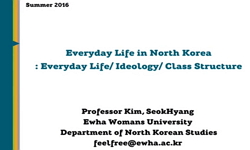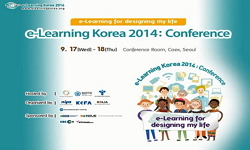We reviewed the current status of thyroid fine-needle aspiration cytology (FNAC) in Korea. Thyroid aspiration biopsy was first introduced in Korea in 1977. Currently, radiologists aspirate the thyroid nodule under the guidance of ultrasonography, and ...
http://chineseinput.net/에서 pinyin(병음)방식으로 중국어를 변환할 수 있습니다.
변환된 중국어를 복사하여 사용하시면 됩니다.
- 中文 을 입력하시려면 zhongwen을 입력하시고 space를누르시면됩니다.
- 北京 을 입력하시려면 beijing을 입력하시고 space를 누르시면 됩니다.
https://www.riss.kr/link?id=A104304861
- 저자
- 발행기관
- 학술지명
- 권호사항
-
발행연도
2017
-
작성언어
English
- 주제어
-
등재정보
KCI등재
-
자료형태
학술저널
- 발행기관 URL
-
수록면
521-527(7쪽)
-
KCI 피인용횟수
4
- DOI식별코드
- 제공처
- 소장기관
-
0
상세조회 -
0
다운로드
부가정보
다국어 초록 (Multilingual Abstract)
We reviewed the current status of thyroid fine-needle aspiration cytology (FNAC) in Korea. Thyroid aspiration biopsy was first introduced in Korea in 1977. Currently, radiologists aspirate the thyroid nodule under the guidance of ultrasonography, and cytologic interpretation is only legally approved when a cytopathologist makes the diagnosis. In 2008, eight thyroid-related societies came together to form the Korean Thyroid Association. The Korean Society for Cytopathology and the endocrine pathology study group of the Korean Society for Pathologists have been updating the cytologic diagnostic guidelines. The Bethesda System for Reporting Thyroid Cytopathology was first introduced in 2009, and has been used by up to 94% of institutions by 2016. The average diagnosis rates are as follows for each category: I (12.4%), II (57.9%), III (10.4%), IV (2.9%), V (3.7%), and VI (12.7%). The malignancy rates in surgical cases are as follows for each category: I (28.7%), II (27.8%), III (50.6%), IV (52.3%), V (90.7%), and VI (100.0%). Liquid-based cytology has been used since 2010, and it was utilized by 68% of institutions in 2016. The categorization of thyroid lesions into “atypia of undetermined significance” or “follicular lesion of undetermined significance” is necessary to draw consensus in our society. Immunocytochemistry for galectin-3 and BRAF is used. Additionally, a molecular test for BRAF in thyroid FNACs is actively used. Core biopsies were performed in only 44% of institutions. Even the institutions that perform core biopsies only perform them for less than 3% of all FNACs. However, only 5% of institutions performed core biopsies up to three times more than FNAC.
참고문헌 (Reference)
1 이경지, "갑상샘 세침흡인세포검사 판독에 있어 베데스다 시스템의 적용" 대한병리학회 44 (44): 521-527, 2010
2 Lee SR, "VE1 antibody is not highly specific for the BRAF V600E mutation in thyroid cytology categories with the exception of malignant cases" 143 : 437-444, 2015
3 Lee MH, "Thyroid biopsy" 20 : 731-736, 1977
4 Lee K, "The history of the Korean Society for Cytopathology" The Korean Society for Cytopathology 15-19, 2006
5 The Korean Society of Pathologist, "The History of the Korean Society of Pathologists 2006~2015" The Korean Society of Pathologist 20-21, 2015
6 Bongiovanni M, "The Bethesda System for Reporting Thyroid Cytopathology: a meta-analysis" 56 : 333-339, 2012
7 Cibas ES, "The Bethesda System For Reporting Thyroid Cytopathology" 132 : 658-665, 2009
8 Kim Y, "Stability of DNA, RNA, cytomorphology, and immunoantigenicity in residual ThinPrep specimens" 121 : 1064-1072, 2013
9 Jung CK, "Split sample comparison of a liquid-based method and conventional smears in thyroid fine needle aspiration" 52 : 313-319, 2008
10 Jung YY, "Significance of subcategory atypia of undetermined significance/follicular lesion of undetermined significance showing both cytologic and architectural atypia in thyroid aspiration cytology" 59 : 370-376, 2015
1 이경지, "갑상샘 세침흡인세포검사 판독에 있어 베데스다 시스템의 적용" 대한병리학회 44 (44): 521-527, 2010
2 Lee SR, "VE1 antibody is not highly specific for the BRAF V600E mutation in thyroid cytology categories with the exception of malignant cases" 143 : 437-444, 2015
3 Lee MH, "Thyroid biopsy" 20 : 731-736, 1977
4 Lee K, "The history of the Korean Society for Cytopathology" The Korean Society for Cytopathology 15-19, 2006
5 The Korean Society of Pathologist, "The History of the Korean Society of Pathologists 2006~2015" The Korean Society of Pathologist 20-21, 2015
6 Bongiovanni M, "The Bethesda System for Reporting Thyroid Cytopathology: a meta-analysis" 56 : 333-339, 2012
7 Cibas ES, "The Bethesda System For Reporting Thyroid Cytopathology" 132 : 658-665, 2009
8 Kim Y, "Stability of DNA, RNA, cytomorphology, and immunoantigenicity in residual ThinPrep specimens" 121 : 1064-1072, 2013
9 Jung CK, "Split sample comparison of a liquid-based method and conventional smears in thyroid fine needle aspiration" 52 : 313-319, 2008
10 Jung YY, "Significance of subcategory atypia of undetermined significance/follicular lesion of undetermined significance showing both cytologic and architectural atypia in thyroid aspiration cytology" 59 : 370-376, 2015
11 Yi KH, "Revised Korean Thyroid Association management guidelines for patients with thyroid nodules and thyroid cancer" 9 : 59-126, 2016
12 So YK, "Preoperative BRAF mutation has different predictive values for lymph node metastasis according to tumor size" 145 : 422-427, 2011
13 Jung CK, "Pathology reporting of thyroid core needle biopsy: a proposal of the Korean Endocrine Pathology Thyroid Core Needle Biopsy Study Group" 49 : 288-299, 2015
14 Lee SE, "Molecular profiling of papillary thyroid carcinoma in Korea with a high prevalence of BRAFV600E mutation" 27 : 802-810, 2017
15 Kim WB, "Management guidelines for patients with thyroid nodules and thyroid cancer" 22 : 157-187, 2007
16 박지혜, "Incidence and Malignancy Rates of Diagnoses in the Bethesda System for Reporting Thyroid Aspiration Cytology: An Institutional Experience" 대한병리학회 48 (48): 133-139, 2014
17 "Guidelines of the Papanicolaou Society of Cytopathology for the examination of fine-needle aspiration specimens from thyroid nodules" 15 : 84-89, 1996
18 김연희, "Evaluation of the VE1 Antibody in Thyroid Cytology Using Ex Vivo Papillary Thyroid Carcinoma Specimens" 대한병리학회 50 (50): 58-66, 2016
19 Kwak JY, "Dual priming oligonucleotidebased multiplex PCR analysis for detection of BRAFV600E mutation in FNAB samples of thyroid nodules in BRAFV600E mutationprevalent area" 32 : 490-498, 2010
20 Park KM, "Diagnostic accuracy of fine needle aspiration cytology in thyroid lesions: analysis of histologically confirmed 153 cases" 7 : 122-133, 1996
21 Koo JS, "Cytologic characteristics and betacatenin immunocytochemistry on smear slide of cribriform-morular variant of papillary thyroid carcinoma" 55 : 13-18, 2011
22 Park HS, "Cytohistopathologic comparative study of aspiration biopsy cytology from various sites" 2 : 8-19, 1991
23 Lee YB, "Current status and diagnostic values of the Bethesda system for reporting thyroid cytopathology in a papillary thyroid carcinoma-prevalent area" 39 : 269-274, 2017
24 정찬권, "Current Cytology Practices in Korea: A Nationwide Survey by the Korean Society for Cytopathology" 대한병리학회 51 (51): 579-587, 2017
25 Gweon HM, "Can galectin-3 be a useful marker for conventional papillary thyroid microcarcinoma" 44 : 103-107, 2016
26 Crile G Jr, "Aspiration biopsy of thyroid nodules" 136 : 241-245, 1973
27 Lipton RF, "Aspiration biopsy and the thyroid in evaluation of thyroid dysfunction" 208 : 736-742, 1944
28 Jung YY, "Application of chemokine CXC motif ligand 12 as a novel diagnostic marker in preoperative fine-needle aspiration biopsy for papillary thyroid carcinoma" 57 : 447-454, 2013
29 Kim ES, "Absence of galectin-3 immunostaining in fine-needle aspiration cytology specimens from papillary thyroid carcinoma is associated with favorable pathological indices" 22 : 1244-1250, 2012
30 Kwon KH, "A study of usefulness of fine needle aspiration cytology of the thyroid lesions" 7 : 111-121, 1996
31 신미경, "A Nationwide Multicenter Survey by the Korean Society of Endocrine Pathologists" 대한병리학회 51 (51): 410-417, 2017
동일학술지(권/호) 다른 논문
-
- 대한병리학회
- Zhiyan Liu
- 2017
- KCI등재
-
Thyroid Cytology in India: Contemporary Review and Meta-analysis
- 대한병리학회
- Shipra Agarwal
- 2017
- KCI등재
-
Thyroid Fine-Needle Aspiration Practice in the Philippines
- 대한병리학회
- Agustina D. Abelardo
- 2017
- KCI등재
-
- 대한병리학회
- 정찬권
- 2017
- KCI등재
분석정보
인용정보 인용지수 설명보기
학술지 이력
| 연월일 | 이력구분 | 이력상세 | 등재구분 |
|---|---|---|---|
| 2023 | 평가예정 | 해외DB학술지평가 신청대상 (해외등재 학술지 평가) | |
| 2020-01-01 | 평가 | 등재학술지 유지 (해외등재 학술지 평가) |  |
| 2014-12-24 | 학술지명변경 | 한글명 : The Korean Journal of Pathology -> Journal of Pathology and Translational Medicine외국어명 : The Korean Journal of Pathology -> Journal of Pathology and Translational Medicine |  |
| 2010-01-01 | 평가 | 등재학술지 유지 (등재유지) |  |
| 2009-04-13 | 학술지명변경 | 한글명 : 대한병리학회지 -> The Korean Journal of Pathology |  |
| 2007-01-01 | 평가 | 등재학술지 유지 (등재유지) |  |
| 2005-01-01 | 평가 | 등재학술지 유지 (등재유지) |  |
| 2002-01-01 | 평가 | 등재학술지 선정 (등재후보2차) |  |
| 1999-07-01 | 평가 | 등재후보학술지 선정 (신규평가) |  |
학술지 인용정보
| 기준연도 | WOS-KCI 통합IF(2년) | KCIF(2년) | KCIF(3년) |
|---|---|---|---|
| 2016 | 0.13 | 0.13 | 0.12 |
| KCIF(4년) | KCIF(5년) | 중심성지수(3년) | 즉시성지수 |
| 0.13 | 0.11 | 0.409 | 0.01 |





 KCI
KCI







